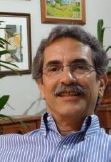Stop learning to innovate through trial and error
Learn TRIZ, a methodology developed by Genrick Altshuller for solving problems more efficiently and intuitively.
Abstracts submitted for TRIZCON2017
The below Abstracts have been submitted for consideration. Authors will be notified if their Abstract is accepted by the review committee for further consideration pending receipt of the final paper by the deadline.
The 40 Principles
by Richard Kaplan
Many TRIZ books and articles have listed the 40 Principles for solving inventive problems, but those that I have read only describe what the Principles are and provide examples of their applications. None analyzes what there is about these Principles that make them so useful for solving difficult problems, only that they have been chosen because of the frequency of their appearance in the patent literature. This article analyzes the Principles from several viewpoints in an attempt to understand why they are so useful.

Biography:
Richard Kaplan has extensively read the creativity literature and has presented over 340 general creativity, Lateral Thinking, and TRIZ seminars, classes, and workshops to over 8,000 attendees in 10 countries. He has also facilitated about 70 creative problem-solving sessions focused on a particular problem. Kaplan is a Chemical Engineer and worked for Amoco Corporation for 29 years before forming his own creativity corporation, Kaplan Creativity Services, Inc. in 1999. He has served as Adjunct Professor teaching Creative Problem Solving at Lehigh University and on the Board of Directors of the American Creativity Association. Kaplan has presented an invited workshop at the Pennsylvania Governors School for Entrepreneurship and two invited workshops at the Commercial Development and Marketing Association meetings. He has studied TRIZ for 20 years
Expanding TRIZ Methods into the Strategy Creation Space
Phil Samuel1*, Michael Ohler2, and Derek Bennington3
1Chief Innovation Officer, Lean Methods Group, 1225 17th St, Suite 3125, Denver, CO 80202 USA
2Innovation Practice Leader, Lean Methods Group, Buchsbaumweg 6, 22880 Wedel, Germany
3Managing Director, The TRIZ Journal, 1225 17th St, Suite 3125,Denver, CO 80202 USA
* Corresponding author
 TRIZ practitioners can rightly claim they master a robust and comprehensive set of approaches for tackling a broad range of business challenges. Organizations need to identify the right things to do (strategy creation) and then plan (strategic planning) and do (strategy execution) these things the right way. Known for their predictable results, TRIZ experts are engaged for doing things the right way. The obvious questions are: which support can they provide when it comes to finding the right things to do within an organization? And what contribution can TRIZ make in the domains of strategy creation and strategic planning?
TRIZ practitioners can rightly claim they master a robust and comprehensive set of approaches for tackling a broad range of business challenges. Organizations need to identify the right things to do (strategy creation) and then plan (strategic planning) and do (strategy execution) these things the right way. Known for their predictable results, TRIZ experts are engaged for doing things the right way. The obvious questions are: which support can they provide when it comes to finding the right things to do within an organization? And what contribution can TRIZ make in the domains of strategy creation and strategic planning?
This paper will discuss a framework for operational strategy which is developed over several years of strategy work carried out at a number of companies from a range of industries. Our focus will be on integrating tools and techniques associated with strategic thinking, strategy building and strategic planning and on how TRIZ thinking can be utilized in order to enhance the strategy processes within an organization.
The cornerstone of this presentation will be a case study of one strategy creation project at a global, multi-billion dollar technology company. It will show how systematic strategy creation can be conducted in a specific business context. The presentation will conclude with a discussion of the specific roles that TRIZ practitioners can play in the creation of strategy and how they can bring to best use their specific skills and competencies.
Lessons Learned Introducing TRIZ in a Creativity and Innovation Course
Submitted by: Tim Schweizer, Ph.D.
This paper offers a brief summary of lessons learned after three iterations introducing/integrating TRIZ into a one-semester Creativity and Innovation course. The course is housed in the Economics & Business Department at a private liberal arts college; the course is offered as a non-technical Management elective and exposes students to multiple creativity and innovation tools. The paper highlights the author’s successful and unsuccessful approaches to introducing/integrating TRIZ (methods of instruction, resources, testing/quizzes, in-class exercises, application assignments, etc.). The benefits and challenges of introducing TRIZ in this type of academic setting are discussed. The paper encourages readers to experiment with different ways to introduce TRIZ into existing curricula at colleges and universities to help diffuse knowledge about TRIZ.
Biog raphy:
raphy:
Dr. Tim Schweizer teaches business courses at Luther College, including a course titled Creativity and Innovation. He has served as a Visiting Lecturer for the Master of Arts in Creativity and Innovation at the University of Malta. He holds a Ph.D. in Business Administration and an MBA from the University of Arkansas. He earned his B.A. in Management from Luther College. Dr. Schweizer is a certified trainer in Edward de Bono’s thinking methods. He is also an active participant in the global TRIZ community, having served as Vice President of the Altshuller Institute for TRIZ Studies. Tim has served as a consultant to Wal-Mart, the Mayo Clinic, and the U.S. Department of Energy.
Improved Method for Drawing Functional Diagrams on the Computer
Donald Coates Ph.D., P.E.
Making functional diagrams on the computer with MicroSoft Word Shapes or similar drawing packages is desirable from a documentation standpoint and from a rapid modification standpoint when compared to drawing them manually. However making the diagrams similar to those done manually is very time consuming by the computer. This new method uses the Tool-Action-Object method as described in some popular books on TRIZ. An example comparing the manual method with the new method is given to show the advantages.
Biography: Assistant Prof. Donald Coates, Ph.D.
 Dr. Coates taught courses on innovation, energy power and industrial controls at Kent State University’s College of Applied Engineering, Sustainability, and Technology prior to his retirement from full time teaching in 2011 as a tenured Assistant Professor. He is still actively teaching courses on innovation using TRIZ and consulting on patent litigation. He was instrumental in establishing an interdisciplinary minor in innovation in the CAEST, a minor and major in entrepreneurship in the College of Business, and developing one of the first on-line TRIZ courses in the USA. Previously he was Vice President of Engineering at the Speed Queen Division of Raytheon, Director of Corporate Primary Development and Director of Dishwasher Engineering at the Frigidaire Company of AB Electrolux, Director of Research for the Hoover Company of the Maytag Corporation and Manager of Whirlpool Automatic Washers at the Whirlpool Corporation. He received a Ph.D. and MSME from Purdue University and a BSME from the State University of New York at Buffalo. He also received the Distinguished Engineering Alumnus and Outstanding Mechanical Engineer awards from Purdue University. He holds 38 US and international patents with another 8 pending and has authored eighteen publications including a contributing author to the book Global Innovation Science Handbook by McGraw Hill. He is member of the American Society of Quality, Tau Beta Pi Engineering Honorary, and the VP of the nonprofit Altshuller Institute for the Theory of Inventive Problem Solving.
Dr. Coates taught courses on innovation, energy power and industrial controls at Kent State University’s College of Applied Engineering, Sustainability, and Technology prior to his retirement from full time teaching in 2011 as a tenured Assistant Professor. He is still actively teaching courses on innovation using TRIZ and consulting on patent litigation. He was instrumental in establishing an interdisciplinary minor in innovation in the CAEST, a minor and major in entrepreneurship in the College of Business, and developing one of the first on-line TRIZ courses in the USA. Previously he was Vice President of Engineering at the Speed Queen Division of Raytheon, Director of Corporate Primary Development and Director of Dishwasher Engineering at the Frigidaire Company of AB Electrolux, Director of Research for the Hoover Company of the Maytag Corporation and Manager of Whirlpool Automatic Washers at the Whirlpool Corporation. He received a Ph.D. and MSME from Purdue University and a BSME from the State University of New York at Buffalo. He also received the Distinguished Engineering Alumnus and Outstanding Mechanical Engineer awards from Purdue University. He holds 38 US and international patents with another 8 pending and has authored eighteen publications including a contributing author to the book Global Innovation Science Handbook by McGraw Hill. He is member of the American Society of Quality, Tau Beta Pi Engineering Honorary, and the VP of the nonprofit Altshuller Institute for the Theory of Inventive Problem Solving.
Teaching TRIZ to Children
By Murashkovsky Jurgis
A distinctive feature is that it gives children an opportunity to get to that need solutions. Not imposed truths, but are given the opportunity themselves to reach the conclusion that it is necessary to devise a method of solving the problem. As part of the training, the children are given the task to develop the talented thinking qualities (KTM), to solve problems, the methods of the invention, as well as an integral part of the training - the solution of personal problems and concerns. As a result, teaching children to develop a KTM, can choose or create methods for solving problems and safely solve their problems faced on a daily basis.
 Biography:
Biography:
TRIZ specialist first level, Master of Economics (Riga).
Born on 16.07.1986, in the Latvian SSR. TRIZ has been since 1998. He started teaching TRIZ school-age children on their program since 2012 participated with a report on TRIZ Summit 2015. He made reports and presentations of the results of working with children for teachers in Latvia, Estonia, and Lithuania. Education of children involved in Riga. Conducted course demonstration classes with children, for teachers in the city of Rezekne.
Solving a Hundred Year Old Problem
By Zinovy Royzen
Each year in the U.S. there are over 1,500 incidents of surgical sponges being left inside patients after surgery resulting in deterioration of the health of the patients or even their deaths. The incidents also financially impact healthcare providers by massive legal and medical cost. Application of TRIZ resulted in the development of a reliable and inexpensive solution to the problem known for more than 100 years.
Biography:

Zinovy Royzen is a TRIZ Master certified by Genrich Altshuller, the creator of TRIZ. He is the founder and President of TRIZ Consulting, Inc.,Seattle, Washington, the first U.S.Company to apply TRIZ, cofounder and in 1998-2007 an Officer of Altshuller Institute for TRIZ Studies.
He is a leading TRIZ consultant, project facilitator, trainer and TRIZ developer. He has transformed the classical TRIZ theory into the most powerful and user-friendly version of modern TRIZ. He has taught thousands of engineers including several hundred engineers at Boeing.
Mr. Royzen has led workshops and/or provided consultation at numerous organizations, including Boeing Co., Eastman Kodak, Ford Motor Company, Harley-Davidson Motor Company, Hewlett-Packard, Illinois Tool Works, Kimberly-Clark, LG Electronics, Lucent Technologies, National Semiconductor, NASA, Philips Semiconductors, Rolls-Royce, Samsung, Siemens, Thermo King Corporation, and Xerox.
His customized on-site workshops and consulting provided his clients with high-quality invention proposals and significant saving. He develops innovative solutions to problems that his customers could not solve for a long period, sometimes for years.
Mr. Royzen has been conducting his TRIZ courses for UCLA Extension since 1997. He is an MS in mechanical engineering, the author of many TRIZ papers and holds 32 patents.
Combining Patent Forward Citation and TRIZ analysis
in a simple method for the identification of
Major Innovations from a Specific Technology Field
by Marques, C.F.S. and Fonseca, M.V.A.
The present study combines patent forward citation count and TRIZ analysis in a method for the identification of the major impact inventions on the modern biotechnology, a highly dynamic, knowledge-based area, on which patents are considered a crucial instrument for intellectual property protection. The combination of patent forward citation and inventive level analyses was applied on the 0.3% most cited patents related to biotechnology applied to the human health, focusing the in vitro diagnostic reagents niche. Documents were retrieved from an online database, and analyzed by the perspective of TRIZ inventive principles, engineering parameters and inventive levels. All significant inventions on the modern biotechnology area could be identified in the selected resulting group, confirming that the proposed method was able to identify the best, valuable and innovative patents in a specific R&D area. The resulting robust patent list can provide core information on major trends, players, expiration dates and free operation niches, for example, without an overwhelming amount of documents and the need of expensive or user-unfriendly software or packages. It can also be elected as a starting list for further patentometrics initiatives. The proposed methodology can be used as basic framework to perform modest, yet pertinent studies on specific technical fields or technologies. The combination of these patent analysis information as a tool for innovation management can be also be adapted to other several knowledge areas, and help academic, corporate and government foresight and forecasting studies, for example, by increasing the innovation impact of worldwide research and dvelopment initiatives, and ultimately, industry performance.
Biographies:
 Christiane de Fátima Silva Marques, C.F.S. Bachelor of Science in Genetics from the Federal University of Rio de Janeiro (2000) and a Master's Degree in Cellular and Molecular Biology from Oswaldo Cruz Institute (2003). Currently holds the position of Technologist in Public Health of the Institute of Technology on Immunobiologicals (Bio-Manguinhos/Fiocruz), working on development projects for molecular and serological diagnosis of infectious diseases. Experienced in Genetics / Molecular Biology, working mainly in the areas of multiplex immunoassays, and PCR. Since March 2013 she has been a Ph.D. student in Production Engineering at COPPE / UFRJ, in the area of Evaluation of Industrial and Technological Projects. Areas of interest include: Innovation Management; TRIZ; text mining; foresight and forecasting.
Christiane de Fátima Silva Marques, C.F.S. Bachelor of Science in Genetics from the Federal University of Rio de Janeiro (2000) and a Master's Degree in Cellular and Molecular Biology from Oswaldo Cruz Institute (2003). Currently holds the position of Technologist in Public Health of the Institute of Technology on Immunobiologicals (Bio-Manguinhos/Fiocruz), working on development projects for molecular and serological diagnosis of infectious diseases. Experienced in Genetics / Molecular Biology, working mainly in the areas of multiplex immunoassays, and PCR. Since March 2013 she has been a Ph.D. student in Production Engineering at COPPE / UFRJ, in the area of Evaluation of Industrial and Technological Projects. Areas of interest include: Innovation Management; TRIZ; text mining; foresight and forecasting.
 Marcus Vinícius de Araújo Fonseca, M.V.A. Professor at UFRJ (Innovation area) as researcher, adviser, and teacher of the disciplines ‘Innovation in Organizations’ (since 2000) and ‘Innovation and its Maps’ (since 2014). Graduated in Chemical Engineering (1978) by UFRJ, M. Sc. at COPPE/UFRJ (1983), Ph.D. in Engineering from the Polytechnic School of USP (1990). The author of more than 110 papers; Vöst-Alpine Award from ABM, in the area of industrial waste reuse. Joined UFRJ's Excellence Group under the PRONEX Program of MCT and CNPq/FAPERJ. Member of MBQualidade (COPPE/UFRJ) in partnership with Bureau Veritas (2001/02). As a consultant, he works in the technological and management areas for several companies. Invited speaker by distinct companies and institutions. Acted on "Mapping the innovative potential of cooperating companies” (PROMINP, 2004/06), creating a potential innovation index used today by PETROBRAS. Coordinated Micromachines project of inert reactive shales (2007/09), and the Environmental Licensing Project for INEA's Board of Directors (2010/11). Integrates a start-up installed at the COPPE/UFRJ Incubator (2014/16) using a nanotechnological approach for the prototyping of new lightweight ceramic material.
Marcus Vinícius de Araújo Fonseca, M.V.A. Professor at UFRJ (Innovation area) as researcher, adviser, and teacher of the disciplines ‘Innovation in Organizations’ (since 2000) and ‘Innovation and its Maps’ (since 2014). Graduated in Chemical Engineering (1978) by UFRJ, M. Sc. at COPPE/UFRJ (1983), Ph.D. in Engineering from the Polytechnic School of USP (1990). The author of more than 110 papers; Vöst-Alpine Award from ABM, in the area of industrial waste reuse. Joined UFRJ's Excellence Group under the PRONEX Program of MCT and CNPq/FAPERJ. Member of MBQualidade (COPPE/UFRJ) in partnership with Bureau Veritas (2001/02). As a consultant, he works in the technological and management areas for several companies. Invited speaker by distinct companies and institutions. Acted on "Mapping the innovative potential of cooperating companies” (PROMINP, 2004/06), creating a potential innovation index used today by PETROBRAS. Coordinated Micromachines project of inert reactive shales (2007/09), and the Environmental Licensing Project for INEA's Board of Directors (2010/11). Integrates a start-up installed at the COPPE/UFRJ Incubator (2014/16) using a nanotechnological approach for the prototyping of new lightweight ceramic material.
*******************************************************************************
Tutorials
Tutorial - 2 hours
Breakthrough Innovation by Conflict Solving
Conflicts are the most severe problems in innovation. An attempt to improve one feature or a function very often leads to deterioration of another feature or a function. The tutorial shows the most efficient ways to develop breakthrough solutions to conflicts and achieve the desired improvement without any deterioration of the conflicting features of functions.
 Instructor: Zinovy Royzen is a TRIZ Master certified by Genrich Altshuller, the creator of TRIZ. He is the founder and President of TRIZ Consulting, Inc., Seattle, Washington, the first U.S. Company to apply TRIZ, cofounder and 1998-2007 Director of Altshuller Institute for TRIZ Studies.
Instructor: Zinovy Royzen is a TRIZ Master certified by Genrich Altshuller, the creator of TRIZ. He is the founder and President of TRIZ Consulting, Inc., Seattle, Washington, the first U.S. Company to apply TRIZ, cofounder and 1998-2007 Director of Altshuller Institute for TRIZ Studies.
He is a leading TRIZ consultant, project facilitator, trainer and TRIZ developer. He has transformed the classical TRIZ theory into the most powerful and user-friendly version of modern TRIZ. He has taught thousands of engineers including several hundred engineers at Boeing. Mr. Royzen has led workshops and/or provided consultation at numerous organizations, including Boeing Co., Eastman Kodak, Ford Motor Company, Harley-Davidson Motor Company, Hewlett-Packard, Illinois Tool Works, Kimberly-Clark, LG Electronics, Lucent Technologies, National Semiconductor, NASA, Philips Semiconductors, Rolls-Royce, Samsung, Siemens, Thermo King Corporation, and Xerox.
Mr. Royzen has been conducting his TRIZ courses for UCLA Extension since 1997. He is an MS in mechanical engineering, the author of many TRIZ papers and holds 32 patents.
- Details
- Category: Abstracts








